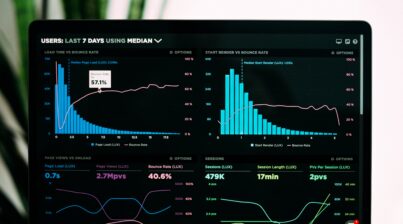Photo by path digital on Unsplash
Executive teams are becoming more and more reliant on HR to provide people data and analytics that help them understand workforce trends for decision-making. But if your HR team isn’t used to how to gather and crunch numbers, where do you turn? How do you know where to go to learn more? We invited Jon Agnone, Senior Director of People Analytics at Salesforce, to join one of our podcast episodes to answer those questions and more. Let’s first start with finding out more about Salesforce.
What Is Salesforce?
In 1999, four Salesforce founders launched a CRM system in a small San Francisco apartment. They had a twist: all the software and customer data would be hosted on the internet and made available through subscription. This was the start of the “software as a service” (SaaS) model.
The Salesforce core values guide everything they do as a company: strive to bring out the best in one another, deliver success to their customers, and inspire the entire industry through their actions.
Who Is Jon Agnone?
I had a great chat with Jon Agnone on our podcast. Here’s a little bit of information about Jon’s background and present role.
I asked Jon how he ended up in the wonderful world of HR. It was by accident. Jon went to graduate school and earned a doctorate in sociology and statistics. He had a friend in data science that invited him to check out the HR world. From there he moved into people analytics and worked 7 years at the Gates Foundation. He realized what all you can do with people data and moved on to Tableau in then to Salesforce.
Jon’s current role is Senior Director of People Analytics at Salesforce. He supports a variety of work streams within HR and operations. He helps leaders understand how their decisions impact the people ops side of the business, such as attrition, hiring, employee growth, and even impacting sales. In addition to his full-time work, he is also an affiliate assistant professor with the University of Washington’s Department of Sociology, faculty associate with the University of Washington’s Harry Bridges Center for Labor Studies, faculty affiliate with the University of Washington’s eScience Institute, and director and co-founder of the Northwest Social Research Group.
Now, let’s dig into the topic of the podcast…
How To Support Executives With People Analytics
Who Do You Present Your Findings To?
At Salesforce, Jon’s team focuses on three pillars:
- Supporting sales and marketing teams
- Helping HR to be key partners of the business and executive leadership team
- Providing reports to the Board of Directors to show decision points and possible pivot points
What Does “Supporting The Business” Mean?
At Salesforce, supporting the business is referring to the sales team and development team. They can’t do their jobs without each other. Jon’s data analytics team will get on sales calls and product calls. In fact, analytics is deeply embedded with both of those teams.
What Are The Top Metrics For HR To Prepare For Executives?
It’s important for HR to support leadership by summarizing at a high level what is going on in the workforce. As HR leaders think about different metrics, the top three to include in an executive dashboard are:
- Attrition. This includes smoothing 12 months, women, and roles
- Hiring Rates. This includes looking at the proportion of who are new over 3, 6, and 9 months
- Diversity. This includes % of women, % of underrepresented minorities, position level, and tenure
For a lot of HR leaders, all the data is very overwhelming, especially if they don’t come from a data and analytics background.
Discover More
There’s much more we cover in the podcast, such as:
- How do HR people learn more about data and analytics?
- What is a human-centered design approach for analytics reports?
- How does a people analytics team serve the business and help it be successful?
- Who is the key customer of people analytics?
- And much more!
Listen to the whole podcast here: How To Support Executives With People Analytics
This is a quick episode at 21 minutes! It is packed full of useful information about how to best support your business and executive team with people analytics.












